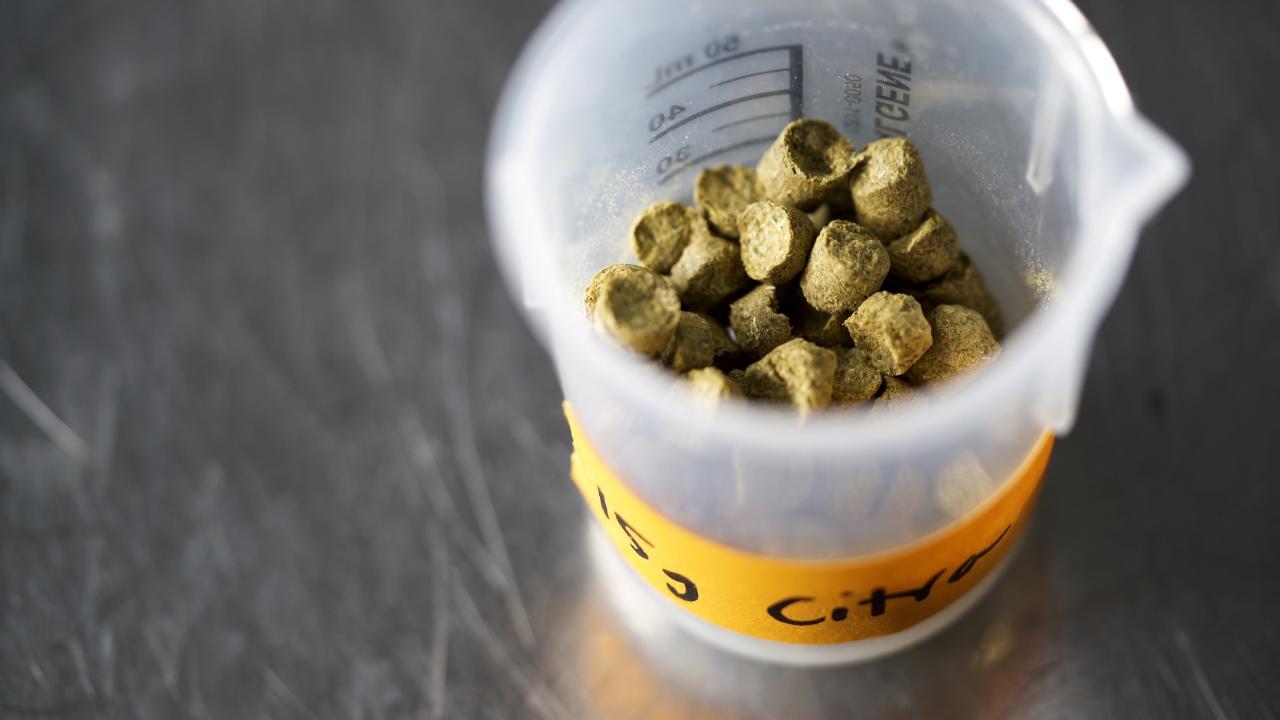
UC Davis researchers examine how different types of yeast affect flavor profile
Crafting beer is a precise science. Brewers know that various types of yeast and different fermentation methods control how beer will taste. But a phenomenon known as “hop creep” can sometimes throw a brewer for a loop.
New research shows that perhaps brewers don’t have to feel bitter about it. A UC Davis study published in the Journal of the American Society of Brewing Chemists provides insight into why hop creep happens and its implications for brewers.
Hop creep is a term that refers to beer that ferments too aggressively during dry hopping, which is a process where hops are added during fermentation. Dry hopping is necessary for creating beers with the citrus, fruit and pine flavors and aromas found in beer styles such as IPA and American Pale Ale.
“Dry hopping is a way to make sure you have that aroma profile you need,” said Glen Fox, Anheuser-Busch endowed professor of malting and brewing sciences. “Yeast can produce most of those fruity, tropical aromas anyway, but dry hopping ensures you will get an absolute punch-in-the-nose aroma profile when you’re smelling it long before you get the glass to your nose.”
Hop creep can cause a beer’s flavor profile to be thrown out of balance due to higher amounts of yeast-related “off-flavors” such as diacetyl, an organic compound produced as a byproduct of yeast during the fermentation process.
“If you’re getting a popcorn aroma or butterscotch flavor, that’s most likely diacetyl,” Fox said.
Diacetyl forms in certain fermentation conditions and certain yeasts are more likely to produce more diacetyl. Fox said it’s a natural metabolic process based on the abundance of some amino acids, but it can impact not only the beer’s flavor, but its alcoholic content as well.
“When dry hopping, if hop creep happens, then brewers are overshooting their alcohol targets and undershooting their final gravities and that can have an impact on the quality,” Fox explained.
UC Davis researchers assessed the variability of diacetyl production by different yeasts in relation to hop creep. Fox helped guide the study’s lead author, James Bruner, who attended the graduate brewing program at UC Davis, to find out the effects of using different yeasts during dry hopping. Bruner, who is now director of production at The Bruery and Offshoot Beer Co. in Orange County, profiled the amino acids coming from the hops and analyzed a dozen strains of yeast that are commonly used in dry-hopped beer or offer unique characteristics to fermentation.
Bruner found a clear increase in diacetyl concentration in seven of the 12 yeasts following the addition of dry hops. According to the study, the use of some genetically engineered yeasts with certain enzymes was an effective way to mitigate the effects of diacetyl resulting from hop creep.
Overall, Fox said that yeast goes through numerous metabolic processes and the production of diacetyl is one of those that happens and that brewers can use this analysis to better understand how to mitigate the risks from dry hopping.
“Given the right conditions, yeast is going to produce diacetyl and it’s no longer a risk to think we shouldn’t dry hop because there’s a greater chance of producing diacetyl, because no, that’s probably not the case,” Fox said. “Now that’s one less thing for brewers to worry about.”
